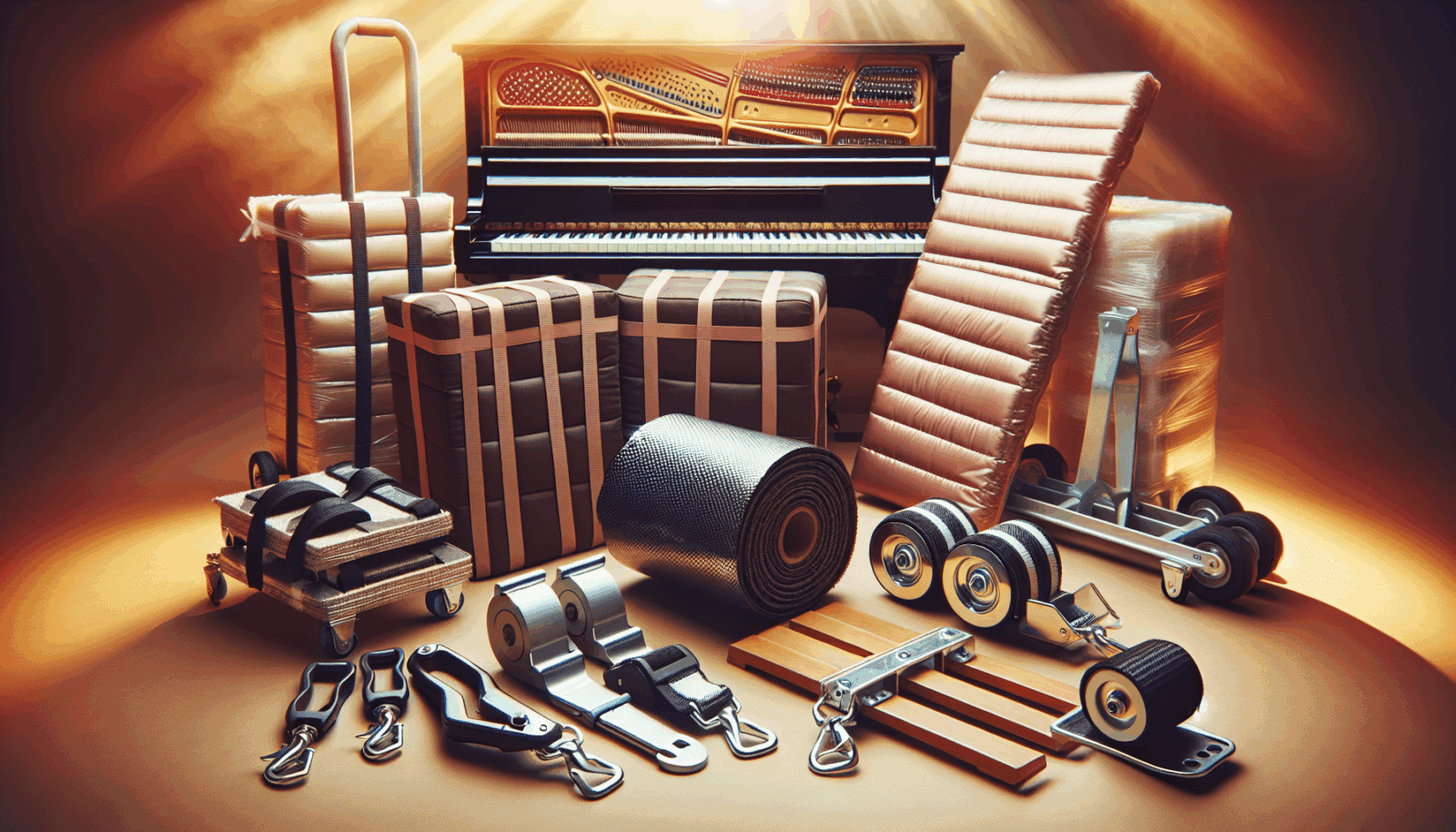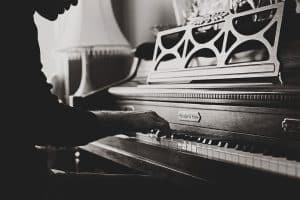Moving a piano isn’t just about having the muscle, contrary to popular belief. It takes the right equipment to ensure your instrument reaches its new home in perfect condition. At Utah Piano Movers, we’re passionate about sharing our expertise with you, the homeowner. In this article, we’ll explore the essential tools that make piano relocation a breeze. Whether you’re DIY-ing it or simply curious, this guide will be your go-to resource.
Contents
- 1 Piano Dollies: The Cornerstone of Easy Movement
- 2 Moving Straps: A Secure Grip
- 3 The Role of Moving Blankets
- 4 Skid Boards: The Unsung Heroes
- 5 Harnessing the Power of Lifting Straps
- 6 Understanding the Utility of Ramps
- 7 Secure with Straps and Belts
- 8 Bubble Wrap: Extra Padding for Accessories
- 9 Getting the Right Gloves
- 10 Conclusion
Piano Dollies: The Cornerstone of Easy Movement
Piano dollies are not your ordinary moving carts. Designed specifically to support heavy pianos, they distribute weight evenly, making transportation smoother and safer. A quality dolly is sturdy and often reinforced with high-grade materials to handle the instrument’s weight without compromise.
Using a dolly not only prevents injury but also protects your floors from damage. A well-equipped dolly will come with rubber wheels to avoid scratches on hardwood surfaces. Remember, a piano isn’t just heavy; it’s also top-heavy, which makes stabilizing it correctly critical for successful relocation.
Moving Straps: A Secure Grip
Moving straps might seem like a simple tool, yet they play a critical role in piano moving. These straps allow for better leverage and control, reducing the physical strain on your body.
With the right technique, moving straps make lifting and maneuvering the piano more efficient. Straps distribute the weight between movers, which is particularly helpful on staircases or uneven terrain. The added control helps minimize the risk of accidents, ensuring your beloved piano stays in pristine condition.
The Role of Moving Blankets
When it comes to safeguarding a piano, moving blankets are indispensable. These thick, padded covers act as a protective layer against dings and scratches.
The plush material of these blankets shields your piano from any accidental bumps during transit. Additionally, securing them tightly with tape ensures the blanket doesn’t slip or expose any part of the instrument. A blanket-wrapped piano is not only protected but also indicates a professional touch in the moving process.
Skid Boards: The Unsung Heroes
Skid boards provide an essential layer of safety when relocating a piano. These boards, often padded, cradle the piano during transport.
Skid boards allow for a more stable move by keeping the piano upright and secure. Perfect for loading and unloading the instrument onto vehicles, they act as a buffer against unexpected jolts. This added protection can make all the difference in preserving your piano’s tune and overall structure.
Harnessing the Power of Lifting Straps
A close cousin to the moving strap, lifting straps are designed for elevating heavy objects with ease. These straps enable a balanced lift, mitigating the risk of damage or injury.
Lifting straps wrap securely around the piano, making heavy lifting less daunting. They work by shifting the piano’s weight evenly across the upper body, which offers more control and less strain. Investing in quality lifting straps can transform the moving experience from stressful to seamless.
Understanding the Utility of Ramps
Navigating stairs or getting the piano onto a vehicle can be challenging. This is where a ramp comes in handy, transforming these potential obstacles into manageable steps.
Ramps create a gradual incline, allowing the piano and its dolly to roll smoothly. This is crucial when accessing higher trucks or managing steps without the need for excessive lifting. As a result, ramps minimize the effort and increase the safety of your piano’s move.
Secure with Straps and Belts
Once the piano is on the move, keeping it secure in a vehicle is of utmost importance. Straps and belts play this vital role by locking the instrument in place.
A properly strapped piano doesn’t shift in transit, protecting it from knocks and collisions. It’s vital to check the tension on these straps to ensure they’re neither too loose nor overly tight. This step is key in preserving the integrity of your piano and ensuring it arrives unscathed.
Bubble Wrap: Extra Padding for Accessories
Often overlooked, bubble wrap provides an extra cushion for fragile piano parts such as pedals or delicate finishes. It’s an inexpensive yet effective method of protection.
Using bubble wrap ensures that smaller components are not subjected to unnecessary stress during the move. Wrap these items securely before covering the piano with moving blankets for comprehensive protection. It’s these little steps that contribute significantly to a safe relocation.
Getting the Right Gloves
A sturdy pair of gloves might not seem necessary, but trust us, they make handling the piano safer and more comfortable. Gloves provide grip and reduce the risk of slippage.
Investing in well-fitted gloves aids in maintaining a firm hold on the piano, especially during intricate maneuvers. They can also help prevent blisters, ensuring that you’re not only efficient but also comfortable throughout the moving process.
Conclusion
Relocating a piano demands more than just effort; it requires the right tools for the job. At Utah Piano Movers, we prioritize safety and skill in every move. If you’re ready for a seamless piano relocation, Contact Us by phone at 801-396-7323 or Request a Free Quote.




